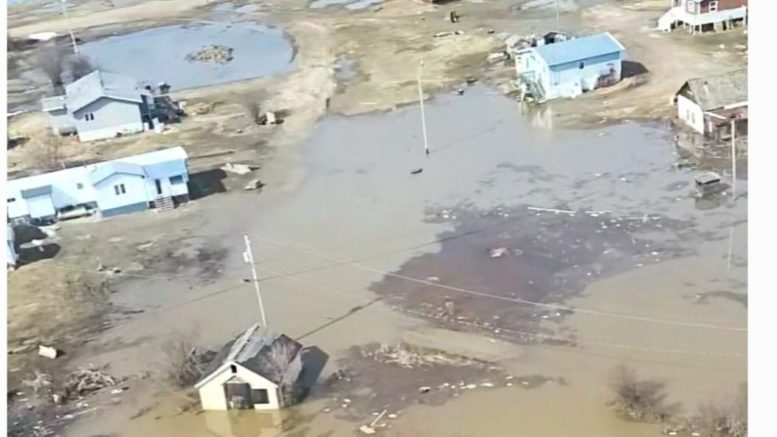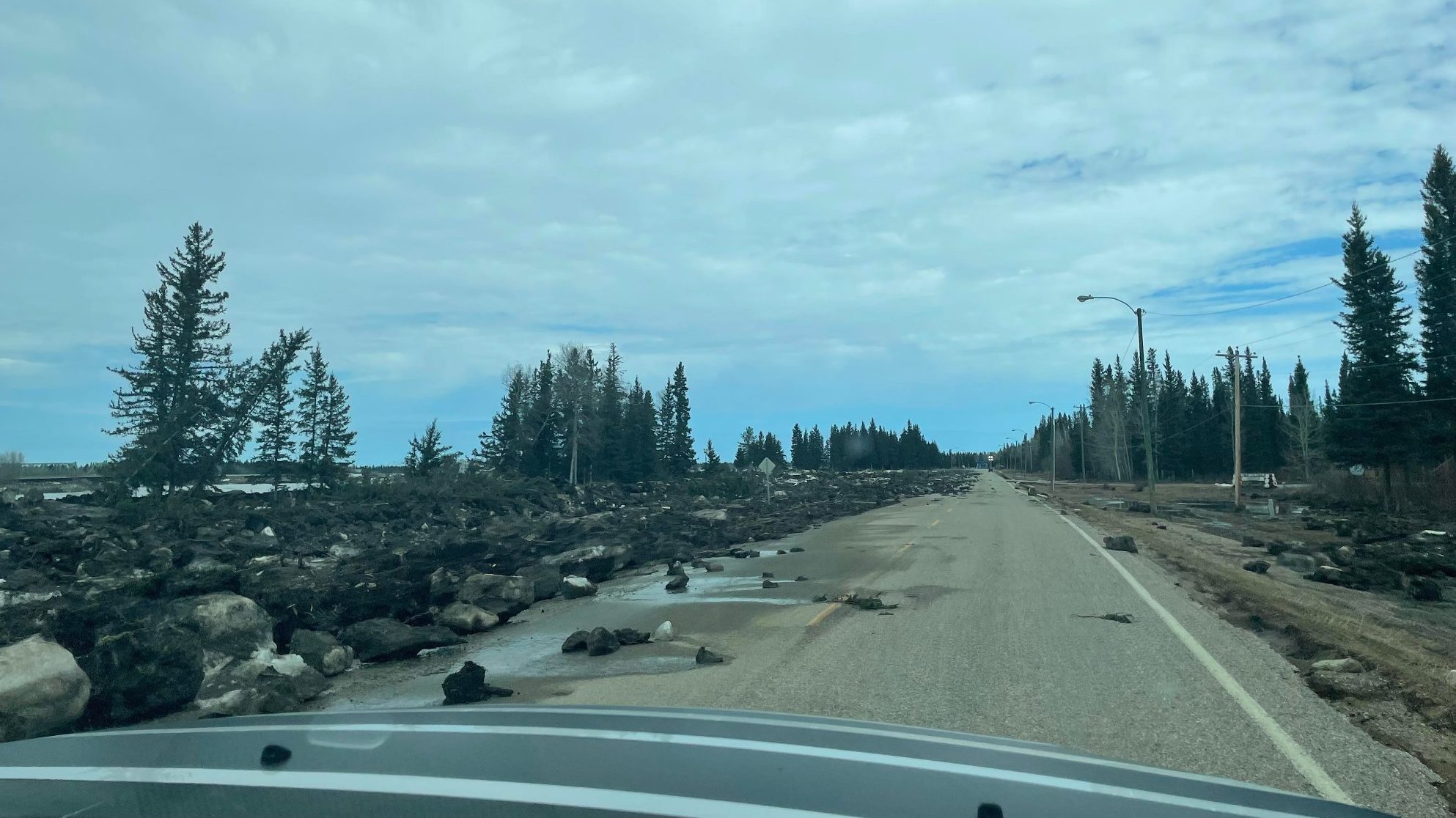With floodwaters finally receding, residents in Hay River and K’atl’odeeche First Nation can start returning to their communities to assess the damage.
Images show some roads still covered with water, others having been eaten away by the water, broken and displaced structures, and a ton of debris.
“We understand your frustration and desire to return home and want to make sure that you are able to do so safely,” said KFN Chief April Martel, in an update posted to social media. “Some areas of the Reserve roads have significant damage and require inspection.”
The update says the Old Village was the worst-hit area of the community.
“Our Members that live in Old Village will need to consider staying at our Dene Wellness centre for the time being… as the roads are not suitable for return.”
On Tuesday, the Town of Hay River issued its reopening plan, outlining different zones with and without functional infrastructure.
The areas with the worst damage include Riverview Dr., Beaver Cres., Caribou Cres. Gaetz Dr., Paradise Gardens, Old Town and West Point First Nation. Each needs road work done, among other recovery activities like power restoration and propane service.
Increased disaster assistance
The territorial government is now requiring residents to register to access disaster assistance.
Residents that were affected by the flood can do so here:
| Community | Venue |
| Enterprise | Community Hall |
| Yellowknife | Multiplex |
| Fort Providence | Snowshoe Inn |
| Fort Smith | Municipal and Community Affairs Office |
| Hay River | Community Centre |
The GNWT unveiled its new disaster assistance policy (DAP) earlier this week. Residents are now eligible for reimbursement of 90 per cent of the damage, up to a maximum of $240,000. Last year, residents in flooded communities could only be reimbursed up to $100,000.
Residents can also get advance payments of 50 per cent of the assessed damage to their property, up to a maximum of $10,000. To do so, the GNWT requires a detailed damage assessment. Once the process begins, Laura Gareau, the deputy minister of Municipal and Community Affairs, says it would be a matter of days to get the money to residents.
Gareau said the GNWT has already started the process to get assessors into the communities. But residents do not need to wait for them to arrive before starting to clean their homes, if it’s safe to do so. They should take photos, videos and document the number of hours they are putting into cleaning up.
Like last year, the GNWT is adamant disaster assistance is not an insurance program. Eligible expenses for reimbursement are for replacement items that are not covered under insurance programs.
Some eligible expenses include: living expenses if they can’t go home, clean up and disinfection to prevent further damage (ex: mould), essential items like furniture and appliances, repairs or replacement of your home, and risk mitigation to prevent future damage if another disaster happens.
In the case of essential items, some residents dealing with last year’s flood have told CKLB that the policy is too restrictive for applicants.
Gareau says the list of items considered essential is “geared to get people quickly back up and recovering from a flood” so is limited to “basic household” items.
The federal government is responsible for disaster assistance in K’atl’odeeche. According to the GNWT, however, the process to access assistance will still be the same for KFN members.
Gareau said going through the DAP “can be a long process.” She added, “It will not be perfect. There’s many moving parts… And we do commit to provide ongoing updates as and when required.”
Long-term adaptation
During a news conference last week, both Premier Caroline Cochrane and Shane Thompson, minister of Municipal and Community Affairs, addressed the need for long-term risk mitigation in the territory in the face of climate change.
Thompson said investing in risk mitigation — whether infrastructure or even relocation — is up to the communities.
“We can’t dictate to them what to do,” he said. “We can provide recommendations and how they should look at things.”
Much of the funds are for risk mitigation projects from the federal government. The NWT government has a much greater capacity than communities to access federal funds for large-scale risk mitigation.
Cochrane acknowledged the GNWT’s greater capacity and said she would work with territorial counterparts to approach the federal government on climate change adaptation.
“But the point is that people need to make informed decisions,” she added. “So I’m not going to tell anyone to not live in an area, but what I can say is if you choose to live in an area that has a higher risk, make sure that you’re aware of the risks and make sure that you’re aware of the precautions.”






